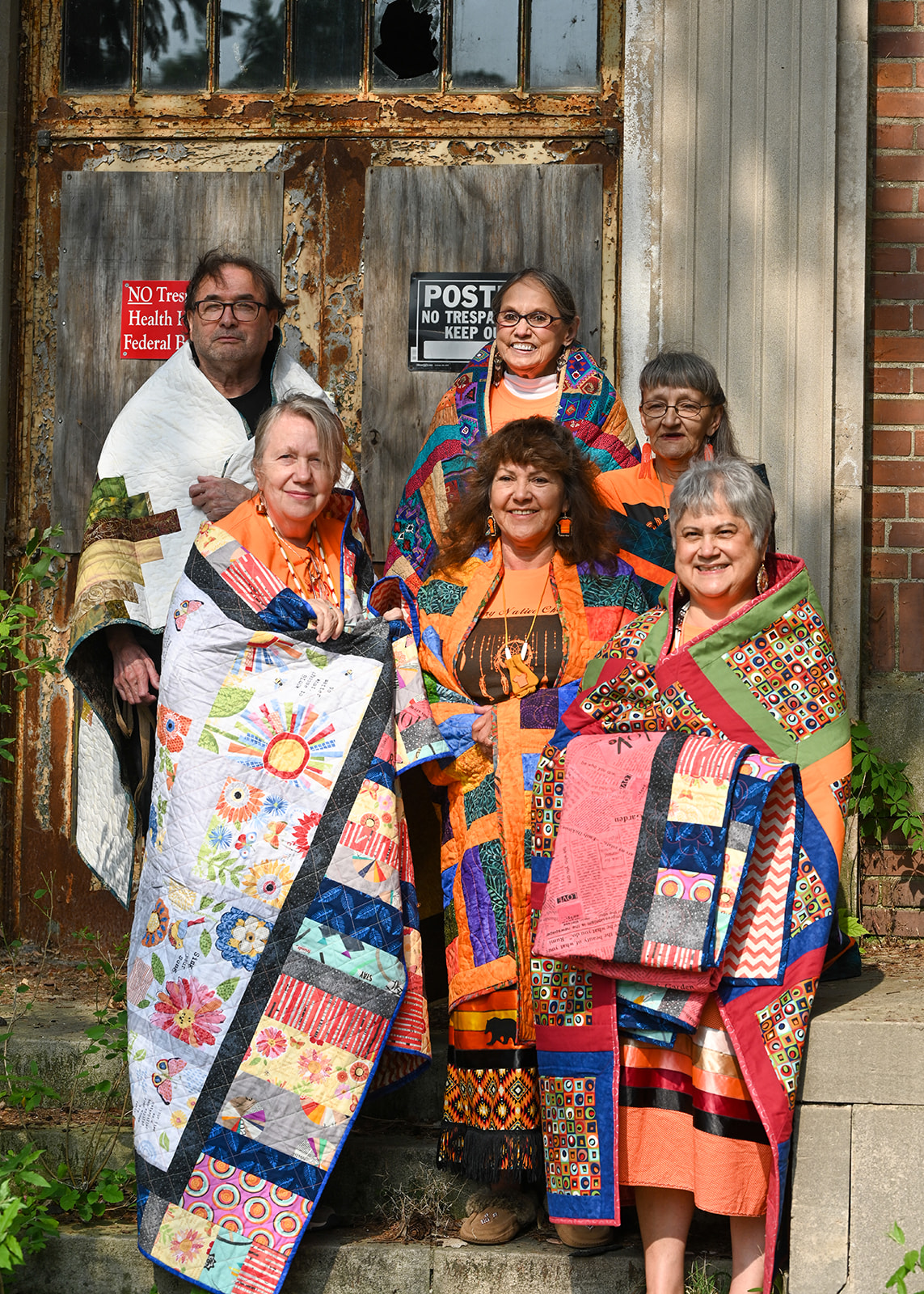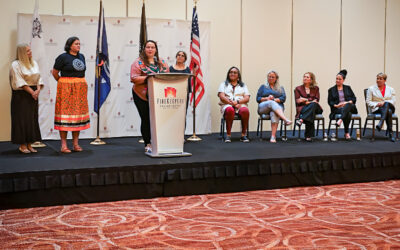Remembering Those Who Suffered While Building Plans to Move Forward
by Katie Halloran | Photos by NHBP Tribal Member and Photographer Johnathon Moulds
227 lives lost.
“We can’t call them our Ancestors because they never had a chance to have descendants, as their lives were cut short from this place,” said Ziibiwing Museum Director and Curator Willie Johnson, Saginaw Chippewa Indian Tribe (SCIT), during the annual Honoring, Healing and Remembering (HHR) event on June 6, 2023, on the site of the former Mount Pleasant Industrial Indian Boarding School (MIIBS) in mid- Michigan.
In its more than four decades of incarcerating Anishinaabe children from all over the Midwest, this boarding school was the direct or indirect result of why 227 children never returned home alive.
During its years of operation from 1893 to 1934, each year, nearly 300 Native American children attended the “school.” Their lives were sustained by a mere 9 cents a day, working from sunup to sundown in a perpetual state of malnourishment, hopelessness and despair, performing manual and life-threatening labor, such as farm work and laundry. Education was rudimentary and Christian-based.
To commemorate the now 89th anniversary of the site’s closing, the SCIT hosts the annual HHR event to not only acknowledge and bring awareness to the truth of what actually transpired on this site and other Indian Boarding schools but also to move forward in a healing, hopeful and meaningful way.
More than 50 NHBP Tribal Members and staff attended the event to demonstrate their reverence and respect for the lives lost, as well as for those who survived, and to ensure their stories are told.
“I feel called to come here each year,” said NHBP Tribal Elder Sue Fierke, Muskegon. “I need to speak up for those who don’t have a voice, like the kids who attended here.”
Tribal Member Harold Morseau snapped a cellphone photo of his father’s initials, “H.M.,” carved into the side of the carpentry building, which would have been a “small act of defiance that would likely have resulted in a great deal of punishment,” said Central Michigan University’s (CMU) Director of Office of Native American Programs Colleen Green, during a small group tour of the remaining buildings and land.
NHBP attendees were among the 550 participants for the HHR event, which marked a record crowd, according to the event organizers.
Sacred Ceremonies punctuated the events of the day, significantly important acts on this ground, considering anything that reflected Neshnabék Culture or Language would have been completely banned on-site during its Boarding School years.
Grand Entry was a somber occasion. Event participants wore lanyards carrying placards of the names and ages of each child who perished on the lands.
“We walk and Sing in honor of those who never had a chance,” said SCIT Tribal Chief Theresa Jackson.
This visual statement of 227 people walking for Grand Entry demonstrated just how many lives were lost. Ogitichedaw Society members representing all 12 federally recognized Tribes in Michigan walked into procession into the grounds to the Drum performed by Onion Creek. NHBP Tribal Member Chad Wethington bore the honor of carrying the NHBP Nation’s flag during Grand Entry.
To further honor the lives lost, Johnson and SCIT Anishinabe Outreach Specialist Isabelle Osawamick performed a student roll call, Remembering the Deceased, reading the list of names of those who perished in chronological order.
Each name was followed by an Honor beat performed by Onion Creek.
The Remembering the Deceased ceremony lasted 14 and a half minutes, denoting the sheer amount of lives lost.
After the honor roll, a small group treaded across the grounds while CMU staff spoke of each building and site’s purpose. The staff also shared stories of the children held captive within the buildings and property.
To honor those who are still living, four Boarding School survivors spoke during a panel discussion. All Kwék presented on their experiences of Holy Childhood of Jesus in Harbor Springs, Michigan, which operated under the Catholic Church until the mid-1980s.

Traditional Healers burnt Sage and Bkwe {smudged} throughout the day, especially as the survivors told of their loneliness, trauma and abuse they endured at Holy Childhood as young children, stripped of their families, homes and even identities.
“My sharing of experiences is a way I find healing because, for so many years, I was told to be quiet, to shut my mouth. But no longer, I am not silent; I am telling my story,” said Marilyn St. Onge-Wakefield, (Sault Ste. Marie Chippewa Indian Tribe). St. Onge-Wakefield spent six and a half horrific years at Holy Childhood.
The event closed with a healing Jingle Dress Dance with nine Dancers in a circle. Those seeking healing came forward with palms open and had Cedar laid at their feet. Attendees parted with a Traveling Song in their hearts, awaiting what comes next.
Today, only a handful of the original red-brick buildings remain on the 320 acre-site, looming large in the natural flatness of mid-Michigan’s landscape, standing ominous as a visual reminder of the federal government-led genocide and assimilation programs that perpetuate much intergenerational trauma to this day.
All other Indian Boarding Schools have been demolished, and MIIBS remains the only Boarding School still standing in Michigan. Although their buildings may be gone, the Boarding Schools’ legacies of trauma and scars remain.
With the site now being held in partnership with the city of Mount Pleasant and the SCIT, the future of MIIBS rests in the hands of a committee that desires to see the history maintained, not erased.
“We don’t always have the money, but we always have a vision,” said SCIT Tribal Historic Preservation Officer (THPO) Marcella Hadden, who told of how complicated funding for this project has proven to be.
The vision of the MIIBS committee is to restore the site to become a museum and memorial, led by Architect Christian Nakarado (Sault Ste. Marie Chippewa Indian Tribe), who shared the proposals and priorities of preservation with the HHR participants.
The MIIBS committee desires the site be a teachable tribute to the atrocities that happened against Native American children for decades, not to be forgotten or omitted like so many other Boarding Schools from the footprints of their towns and regions.
The MIIBS committee welcomes any Tribal Member or community member’s input. For more information on how you can get involved, please visit www.sagchip.org/miibs.
View the full photo gallery click here.




0 Comments